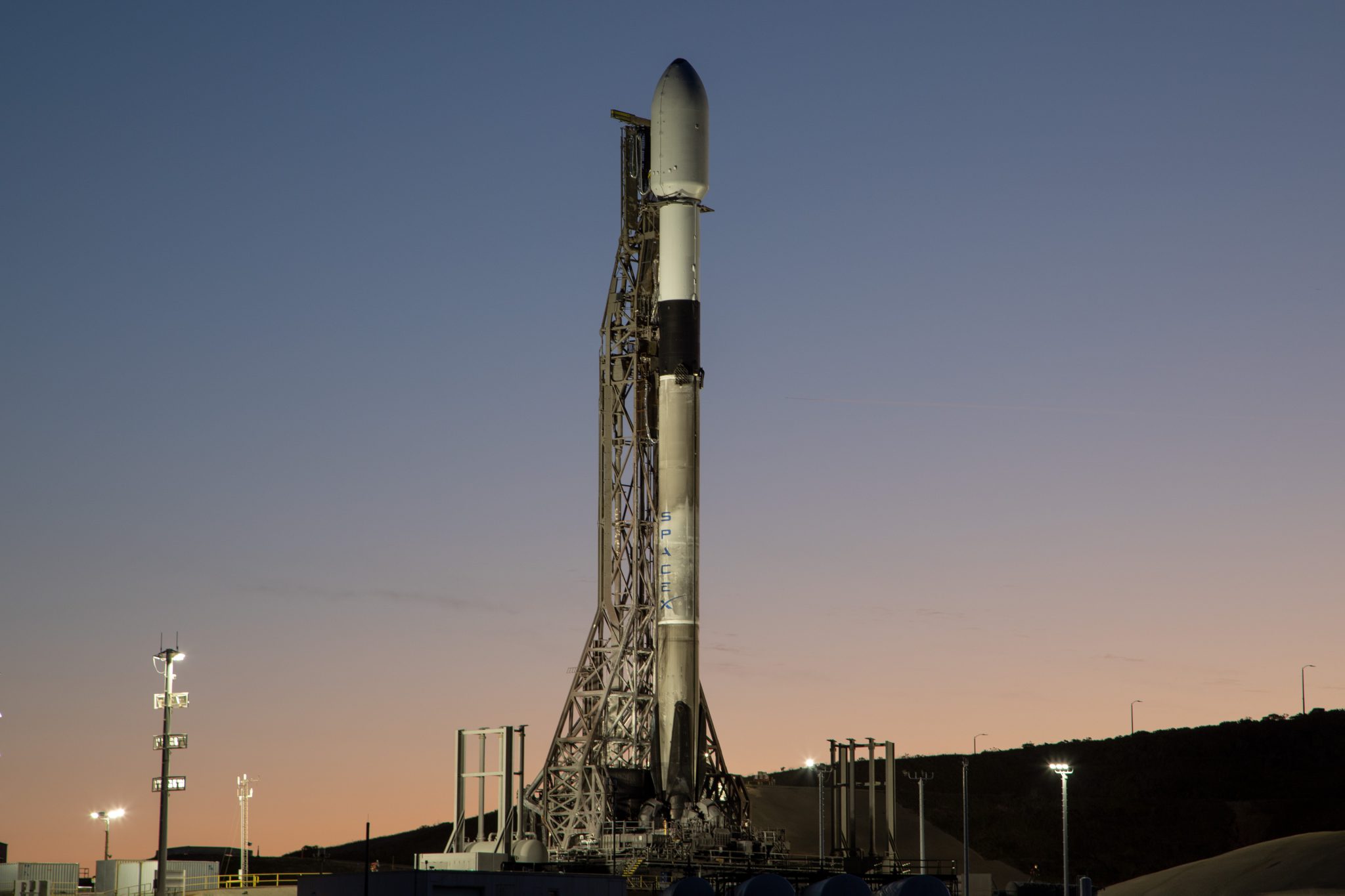WASHINGTON — The Space Development Agency is preparing to launch at least 13 satellites in late June, the agency’s director Derek Tournear said May 26.
This will be SDA’s second launch of Tranche 0 satellites for its proliferated low Earth orbit constellation.
Tranche 0 is a 28-satellite demonstration constellation. The first 10 spacecraft — eight communications satellites made by York Space and two missile-detection satellites made by SpaceX — launched April 2 on a SpaceX Falcon 9.
SDA initially planned to launch all 18 remaining in June but made some late changes to the manifest, Tournear said in an interview with SpaceNews.
The upcoming mission — scheduled to fly on a SpaceX Falcon 9 rocket in late June from Vandenberg Space Force Base, California — is now projected to launch 11 communications satellites (10 made by Lockheed Martin and one made by York Space) and two missile-tracking satellites made by SpaceX.
There were two Tranche 0 York satellites on the manifest but one is likely to be kept on the ground so SDA can use it for software tests, said Tournear.
Four L3Harris Tranche 0 satellites were scheduled to launch but were taken off the manifest due to production delays, he said. The four satellites will fly to orbit on a separate mission planned by the Missile Defense Agency. MDA is preparing to launch two prototypes — one made by L3Harris and the other by Northrop Grumman — for its Hypersonic and Ballistic Tracking Space Sensor (HBTSS).
SDA and MDA are collaborating closely on missile tracking and missile defense architectures, said Tournear. The agencies agreed to deploy L3Harris’ wide field-of-view satellites made for SDA in the same orbit as the HBTSS medium field-of-view missile defense satellites.
This will help both agencies figure out how they will integrate future sensor networks, said Tournear.
The new plan turned out to be a “win win,” he said. “Once MDA agreed that we could put our L3Harris satellites on their launch, it became a very easy choice.”
MDA has not yet announced a launch date for the HBTSS mission.
SDA’s first 10 satellites in good health
Of the 10 satellites launched April 2, both SpaceX tracking satellites have reached the intended orbit about 1,000 kilometers above Earth.
“We will be able to get tracking data very shortly,” said Tournear. “We have to make sure we have the payloads and the software in place to be able to do the tracking mission.”
The eight York satellites haven’t performed their orbit raising yet because SDA needs extra time to test the Link 16 payloads onboard those satellites, he said.
Link 16 is a data exchange and radio communications network widely used by the U.S. military and NATO allies.
Once the York satellites complete their orbit raising, SDA will test the inter-satellite laser communications links, which requires more separation between the satellites.
“Our plan is to have everything tested, checked out and ready to do initial mission demonstrations in late June. early July,” said Tournear.
The Tranche 0 satellites are what SDA calls a “warfighter immersion tranche” that will give military users an opportunity to experiment with the technology and better understand the capabilities of LEO satellites for missile tracking and for data relay.
Following the Tranche 0 deployment, SDA plans to launch dozens more satellites on a monthly cadence starting with Tranche 1 in late 2024.
The Tracking Layer is envisioned as a global network of sensors that will provide a defense shield against Russian and Chinese ballistic and hypersonic missiles. The data collected by missile-tracking satellites will be sent via optical links to the Transport Layer. That would ensure that if a missile threat is detected, its location and trajectory data can be transmitted securely through space and downlinked to military command centers.
SpaceX’s final Tracking Layer satellites
Tournear said the four tracking satellites made by SpaceX for Tranche 0 are likely to be the company’s last. SpaceX did not bid for the Tracking Layer Tranche 1 contract, which was won by L3Harris and Northrop Grumman.
To meet SDA’s required satellite orbit at 1,000 kilometers, SpaceX built the four satellites using a customized bus, not the one the company mass-produces for its Starlink internet constellation, Tournear said.
To track hypersonic missiles in all phases of flight, DoD determined that satellites 1,000 kilometers above Earth will be better positioned to see these targets.
SpaceX informed SDA it did not bid for Tranche 1 because the requirements could not be met with the Starlink bus, said Tournear, However, “we’re working with them to see how they can participate in the future.”
SDA is seeking input from LEO internet companies like SpaceX, Amazon and others on how they might provide a low-Earth orbit “backhaul” capability to support military data transport.
“We are looking for how commercial providers could augment the overall Defense Department space data transport layer and have a seamless integration with the SDA data transport layer,” said Tournear. “So there’s certainly activities like that that are going on.”
SDA’s vision is to deploy “translator satellites” that would allow SDA spacecraft to talk to commercial remote-sensing and communications providers.
“We are looking for ideas from companies on how they could tie their company’s offerings into the transport layer,” he said, “so that we can have multiple different pathways to get low latency, tactical data link, and also be able to augment or back that up with commercial systems.”
